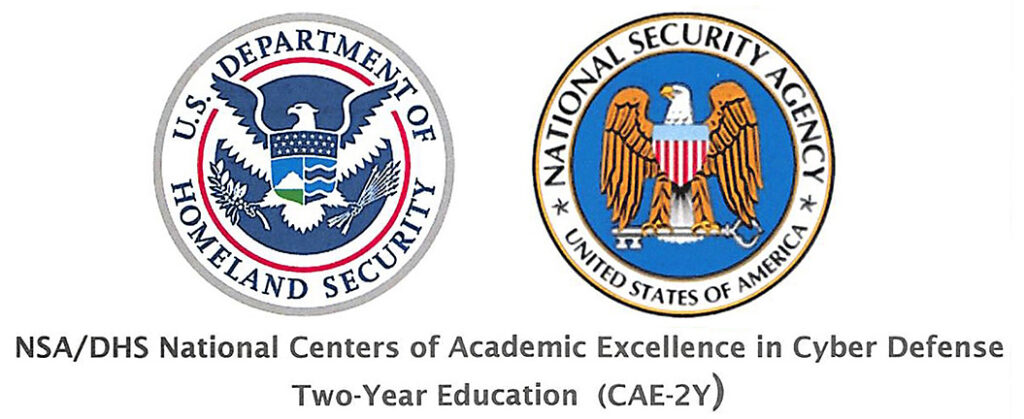Associate of Applied Science
 63* credit hours
63* credit hours
This program is designed to introduce students to contemporary information systems security, information assurance and demonstrate how these systems are used throughout global organizations. The focus will be on the key components of information systems assurance and cybersecurity – people, software, hardware, data, security, and communication technologies, and how these components can be integrated and managed to create competitive advantage. This program is specifically designed to prepare and certify students as Information Systems Security (INFOSEC) Professionals, NSTISSI No. 4011 and CNSSI No. 4016 Entry Level Risk Analysts or provide current Information Systems security certification to meet the needs of current and future employer requirements. Upon completion, students will receive a university certification of completion, the CompTIA Security+ and EC-Council Certified ethical hacker (CEH)™ industry certification in addition to their degree. The program meets the CAE-2Y curriculum certification by the NSA and complies with DOD 8570 certification. Students will participate in the Cybersecurity Challenge competition with industry partners to demonstrate and apply program knowledge in the capstone class.
Upon completion, students will be able to:
- Apply skills to plan, analyze, develop, implement, maintain, and enhance information systems security programs, policies, procedures, and tools to ensure the confidentiality, integrity, and availability of systems, networks, and data.
- Understand and apply knowledge to implement higher-level security requirements; integrate security programs across disciplines; define security plans and policies; assess new system design methodologies to improve software quality; and institute measures to ensure awareness and compliance.
- Knowledge to evaluate and assess new security technologies and/or threats and recommend changes; review and evaluate security incident response policies; and develop long-range plans for IT security systems.
- Understand and have the knowledge to resolve integration issues related to the implementation of new systems with the existing infrastructure and why information systems are used today and the technology, people, and organizational components of information systems.
- Understand and analyze various types of information systems provide the information needed to gain business intelligence to support the decision making for the different levels and functions of the organization, the value of information systems investments, how organizations develop and acquire information system, including estimation of both costs and benefits.
- Understand, apply and evaluate how to secure information systems resources, mitigate risks as well as plan for and recover from disasters, focusing on both human and technological safeguards, ethical concerns that information systems raise in society, and the impact of information systems on crime, terrorism, and war.
*Additional hours may be required for program requirements for transfer students who are NMGEC complete.
To learn more about the program requirements, click on the links below:
Information Systems Cybersecurity AAS
Information Systems Cybersecurity AAS Pathway

